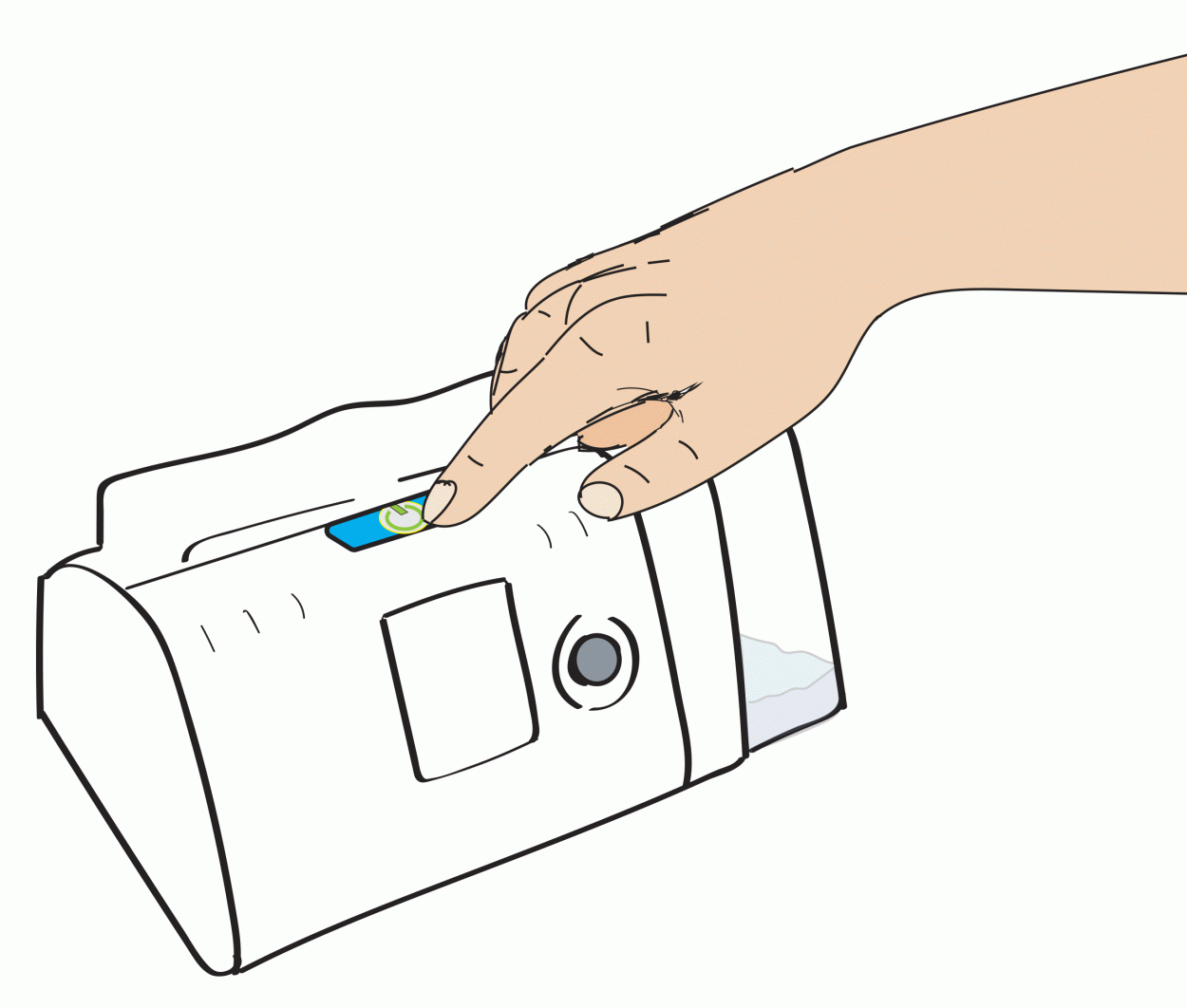Module 2: Breathing with
Breathing equipment
BiPAP
BiPAP machines (Bi-level Positive Airway) are the most common machines currently used for respiratory failure. More than 8 out of 10 patients, with differing needs for long-term mechanical respiratory support, have such equipment. The reasons being that the machines facilitate adaptation and are easy to use. They are also more affordable than more advanced ventilators, which have more additional features.
Most of the machines do not have a built-in battery, even though many can be connected to an external battery. As indicated by its name ‘Bi-level’, the air flow pressure of the machine works on two levels. The pressure must be higher, i.e. positive airway pressure, than the ambient air in order for the air to be pressed down into the lungs. The video illustrates how the pressure changes the depth of breathing.
Animated illustration of how the BiPAP machine works. BiPAP pushes air into the lungs and helps the user to take a deeper inhale .

Animated illustration of how the BiPAP machine works. BiPAP pushes air into the lungs, and the pressure changes the depth of the breathing in the lungs.
Connection
Most BiPAP machines require power from the mains supply, as they do not have a built-in battery. It is easy to connect the machines. How to connect the machines:
- Power cord with a converter
- BiPAP
- Hose
- BiPAP mask (with expiration hole) (see About mask therapy)

The four steps of how to connect a BiPAP machine.
Most BiPAP machines can be connected to a humidifier, as an additional component of the machine. The humidifier has a chamber that is filled with normal tap water and a hotplate, the temperature of which regulates the humidity of the air. The water must be replaced daily and the chamber must be cleaned twice per week.

On/Off
BiPAP machines are normally started and stopped by pressing once on the same button. This is not the case with life-sustaining ventilators ("respirators") nor some of the most advanced BiPAP machines, which often require confirmation that the machine must indeed stop, e.g. by pressing a different button or pressing the same button twice.

Alarms
The doctor can set different alarms, for example, to alert slow or low-level breathing. However, such alarms are rarely used with BiPAP therapy. On the other hand, alarms are commonly used for significant leakage from the mask, for example, if the mask falls off. Other alarms can be activated for power failure or stoppage of the machine for other technical reasons. In general, an alarm will sound with a combination of sound and light signals or screen symbols. For more detailed information, see ‘In Norway’ below.
You can easily test whether the leak alarm has been turned on by starting the machine without putting the mask on. Some patients want as few alarms as possible and it is up to the doctor to decide what is safe and appropriate. For most patients it will not normally be hazardous to sleep one night without the machine, even though it is disadvantageous to do so. In the long-term it can adversely affect your health if you become lazy with the therapy.
Cleaning and servicing equipment
All BiPAP machines have some type of filter that coarsely removes dust from the air, similar to a vacuum cleaner. Replacement filters are normally provided with a new machine. When these have been used, the hospital unit for therapy assistive devices (SBH) will issue new filters. SBH is responsible for all consumable items and servicing of the equipment. The BiPAP tube should be washed once per week with a mild detergent and thoroughly rinsed before drying. The actual BiPAP machine only needs dusting. See the separate section for cleaning masks.
Carrying out checks/follow-up/adjustments
All modern BiPAP machines can store information on the therapy in terms of how it is working, i.e. information about how the machine has been used, whether there has been substantial leakage, how much and how fast air is breathed, and whether breathing has stopped. This information is very useful for doctors and nurses when patients attend check-ups, as it can provide an indication of whether the settings need adjusting or whether the mask is good enough. Normally, BiPAP patients attend a check-up at the pulmonary outpatient clinic every six months, but this can vary quite a lot. Some patients require more frequent check-ups, whilst annual check-ups are enough for others.
Problems during the adaptation period
Problems that arise during the adaptation could be caused by the mask or machine. The first-mentioned is described in detail under ‘Mask therapy’. A doctor or nurse generally adjusts machines that are not optimally set, as such the machine needs to be ‘unlocked’. However, some machines have so-called ‘comfort settings’, which patients can adjust themselves. For example, rise time (how quickly the pressure rises when aspiring air) and the temperature of the humidifier (how hot and humid the air should be).
User manual
The user manual for the newer generation of BiPAP machines can be downloaded from the web page of the National advisory unit on long-term mechanical ventilation.